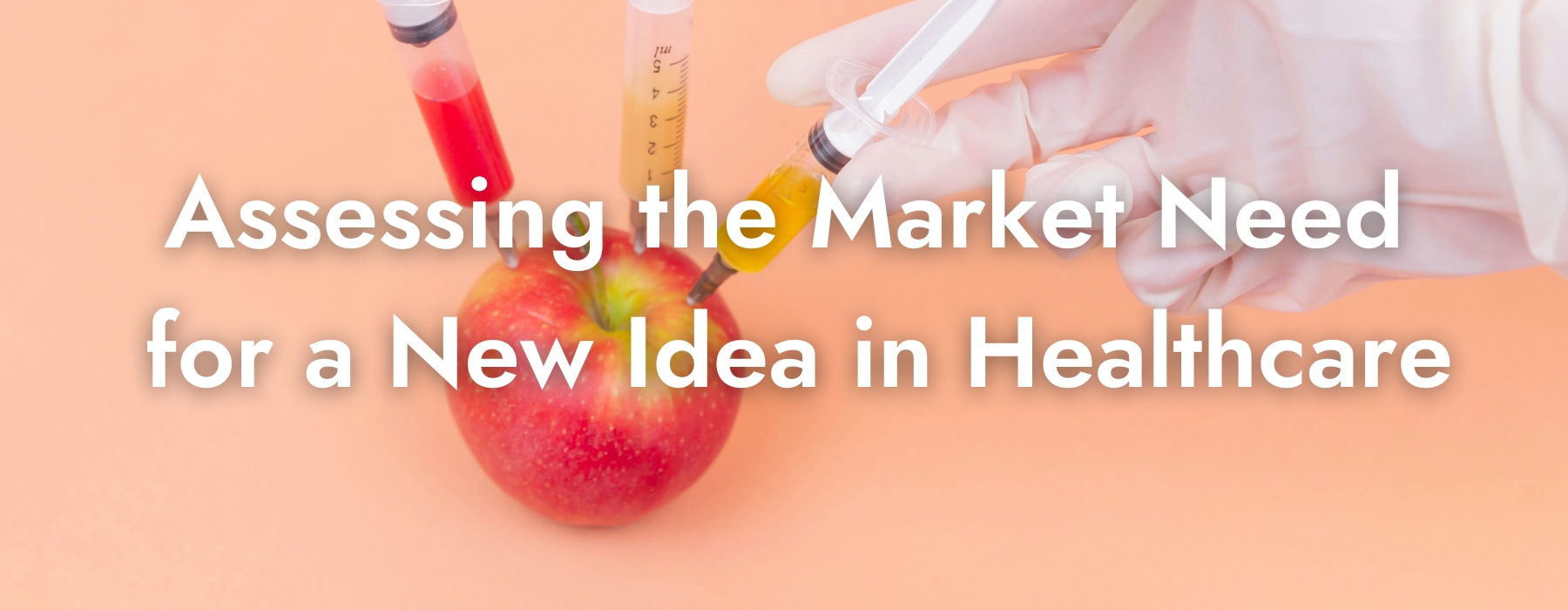Assessing the Market Need for a New Idea in Healthcare
In the ever-evolving field of healthcare, bringing a new idea to fruition involves a meticulous understanding of the market need. Whether it’s a new drug, a revolutionary medical device, a healthcare app, or a unique service model, the success of such innovation hinges on its relevance and demand within the healthcare market. Here’s a structured approach for assessing the market need for a new idea in healthcare:
Step1: Define Your Idea
Begin by clearly defining the value of your healthcare innovation:
- What problem does it solve?
- Define the clinical condition or medical indications it solves best.
- How does it improve over existing solutions?
If your idea can be used to treat several conditions, choose the one that is of utmost need. Establish clear objectives for the design of your idea, based on the defined unmet needs.
Step 2: Conduct Comprehensive Market Research
Healthcare market research is a systematic process that involves ongoing collection, analysis, and interpretation of data related to the healthcare industry. It helps in understanding market dynamics, consumer behavior, and competitive landscape. Remember, since it takes a long time to reach the market, market research should be updated regularly.
Step 3: Analyze Market Size,Growth and Structure
Understanding the size and growth rate of the healthcare market, including specific segments relevant to your idea, is crucial. It is also important to learn how the market is structured: who are the critical players, who controls what segment (including HMOs, government, etc.).This analysis helps identify the potential and scalability of your innovation.
Step 4: Gather Consumer Insights
Gaining insights into consumer behavior, preferences, and needs is essential. This involves collecting data on patient demographics, healthcare personnel approach to the idea, healthcare utilization patterns, to assist in the development of patient-centric solutions.
Step 5: Competition
Search for competitor or existing solutions, even if they are not similar. Assessing your competitors’ products, pricing, distribution channels, and marketing strategies provides a benchmark and helps you plan your offering effectively in the market.
Step 6: Consider Regulatory Environment
Healthcare is heavily regulated. Staying informed about regulatory changes and ensuring compliance is vital when developing and introducing new healthcare products or services. Follow the regulatory agencies of the markets you wish to reach regularly. Learn about their approval of products for the same intended uses.
Step 7: Test Market Acceptance-clinical trials
Before a full-scale launch, testing your idea through pilot studies or focus groups can provide valuable feedback on market acceptance and potential areas for improvement. Clinical trials are compulsory for some products, like drugs and high-risk medical devices. Some products can get approval without clinical trials, but marketing and commercializing will almost always require them in healthcare. Learn the process and seek expert advice.
Step 8: Plan for Market Entry and Expansion
Assess the feasibility of entering new markets or expanding operations. This includes understanding local healthcare systems, reimbursement mechanisms, and customer preferences.
Conclusion
Assessing the market need for a new healthcare idea is a complex but critical process. It requires a deep dive into market research, consumer understanding, and competitive analysis. By following these steps, healthcare innovators can significantly increase the chances of their idea’s success in the market.
Tips: Looking for competitors
- check for sponsors of clinical trials for the defined indication in www.clinicaltrials.gov
- check patents database, using search topics such as indications, diseases, devices, names of sponsors, names of scientists in the field etc. www.espacenet
- seek expert advice–the path to the market is long, expensive and success rate is low.

Subscribe Now to the Bio-Startup Standard
Notify me for the next issue!

















